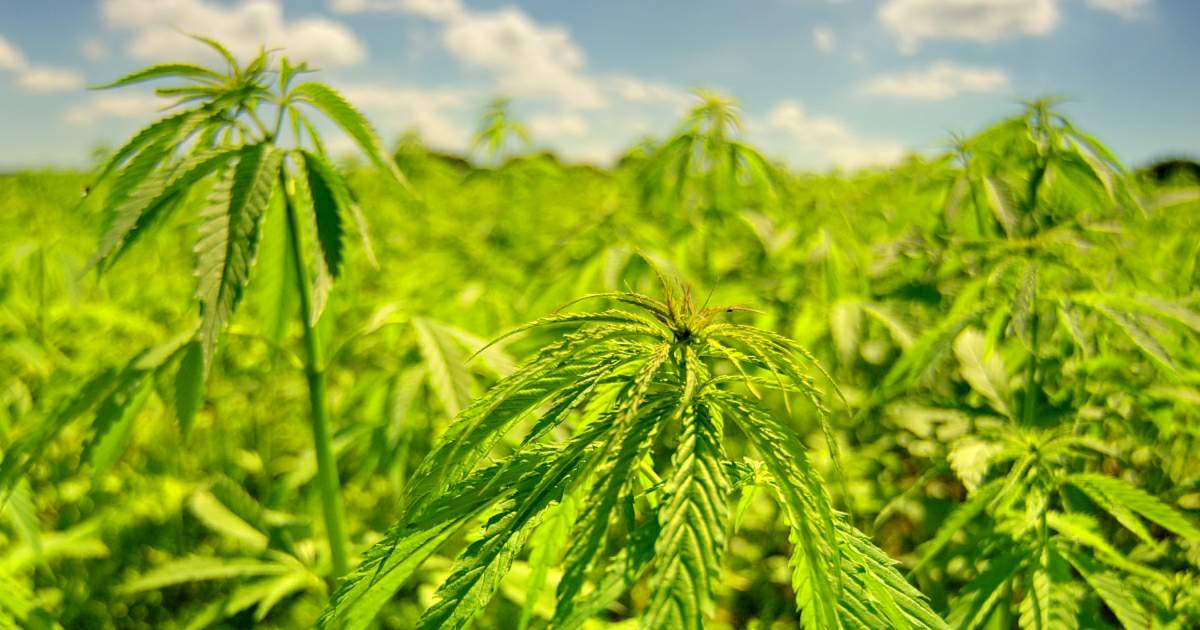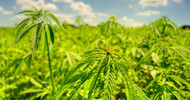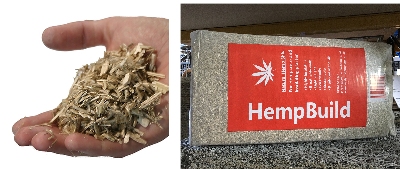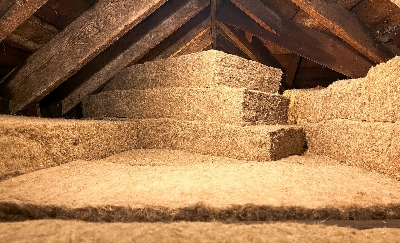Five Reasons We Love Hemp
Posted by Celtic Sustainables on 11th Oct 2022
Growing hemp as an agricultural crop is having an exciting revival in the UK countryside.

Above: Field of Hemp in Surrey UK, Photo credit: Crispin Jones.
Fields of hemp in the UK countryside were common during the time of King Henry VIII when he made the cultivation of hemp compulsory by law. In 1533 for every 60 acres of fields, farmers had to grow about ¼ acre of hemp. You could even pay your taxes with hemp! You see hemp was (and still is) an incredibly useful plant. Back then it was used mainly for rope and sailcloth. Our Navy depended upon it.
Hemp became illegal to grow in the UK on the 28th of September 1928 when it was rolled in with its cousin marijuana under The Dangerous Drugs Act 1025. Since then, a lot of research has been done to differentiate the two varieties of Cannabis Sativa, and hemp is now making a reappearance in the UK countryside.
Hemp as a crop has so many environmental benefits. Here are our top five:
1. Every part of the hemp plant is useful
Did you know that hemp can be used to produce over 25,000 different products? Every part of this plant is useful:
- The woody inner core of the stalks can be chopped to make “shiv” which is used to make hempcrete and for animal bedding.
- The outer parts of the stalks can be made into natural fibres for textiles and insulation.
- The flowers and leaves can be processed to make CBD products.
- The seeds can be pressed to make oils (for cooking and industrial applications).
- Anything that is left over is made into briquettes for fuel.
Nothing is wasted.
We stock UK grown and processed Hemp Shiv (used to make hempcrete) and Hemp Insulation products for natural building and renovations.
Hemp has so many uses. We love it! The only thing this plant can’t do is get you high (it is very different to its cousin marijuana in that regard).
2. Hemp captures and stores carbon
Hemp, like all plants, captures carbon dioxide (CO 2) from the atmosphere. Through natural photosynthesis, plants convert the carbon (from the CO2 combined with water) into glucose and convert it further to make cellulose and starch. The plant uses cellulose to build cell walls i.e., to grow the plant (and the starch is used to make seeds, which is why some foods that we eat, like rice and grains, are packed with starch).
Hemp acts as a carbon store, sequestering CO2 from the atmosphere for as long as the plant continues to exist. So, if the stalky bits of the hemp plant are dried and used in something like insulation in a house, the CO2 is locked up for a very long time. It is only re-released when the material is composted or burnt.
Did you know that Hemp absorbs more carbon than it takes to grow it? It is a “carbon-negative” crop. Hemp's rapid growth (it grows to 4 metres in 100 days) makes it one of the fastest CO2-to-biomass conversion tools available. Put another way, for every tonne of hemp produced, 1.63 tonnes of carbon are removed from the air, which makes hemp an effective sequester of carbon dioxide (source East Yorkshire Hemp).
According to Darshil Shar (University of Cambridge Researcher) hemp absorbs between 8 to 15 tonnes of CO2 per hectare of cultivation (and can be grown twice a year). A forest typically captures 2 to 6 tonnes of CO2 per year depending on the forest.
3. Hemp supports sustainable farming
Hemp grows to maturity within just four months of being planted. This makes it ideal for planting in a rotation crop with other crops or to get another crop of hemp grown and harvested within the same year.
Unlike other crops, hemp doesn’t require any pesticides or herbicides to grow, just fertiliser, sunlight, and water. Indeed, the plant improves the soil it is grown on. The stem and leaves of the hemp plant are jam-packed with nutrients. As the plant matures and the seed grows, leaf matter falls to the ground and decomposes replenishing the soil with goodness ready for the next crop. Weeds cannot compete due to the lack of sunlight from the dense and tall crop. This means after harvesting the soil is richer and cleaner.
4. Hemp prevents soil erosion
The roots of the hemp plant can grow to over 2.5m deep. During flood events, these root networks can help to hold the soil together and prevent erosion.
Research in the Netherlands has found that deep-rooted plants also increase the water storage capacity of the soil. Therefore, reducing the need to irrigate during dry spells and reducing surface water runoff during storms as the water can infiltrate deeper into the soil more easily. It can therefore help reduce flooding.
5. Birds and Bees love hemp fields
There are a few reasons why biodiversity is high in fields of hemp. The first is that the farmer doesn’t need to use any pesticides (or rarely must use) and therefore won’t be killing any insects in the field. The second is that birds just love the tall stems of the hemp to hide from predators and have plenty of small insects to feast upon amongst the crops. The third reason is that when hemp flowers bloom, they are a good pollen source for bees.
The Future of Hemp in the UK
There is a lot of interest in hemp as a product for construction now (as it has great insulation and sound properties – see Hemp Shiv and Hemp Insulation product pages for details). A lot of research being done too. We expect more hemp products to be available soon. Watch this space.




